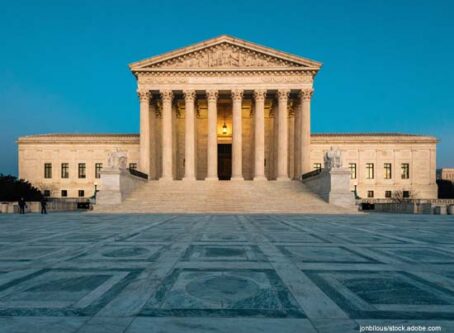Ohio appeals court upholds jury verdict exonerating trucker in crash
Even though evidence may have been improperly admitted during the jury trial, an Ohio appellate court says the jury’s verdict finding a truck driver not to be at fault in a 2017 crash should still stand.
On April 10, the Second Appellate District Court in Darke County, Ohio, reversed a trial court’s decision to declare a mistrial in a case involving a pickup truck crash with a tractor-trailer.
Originally, a jury found trucker Robert Byram to be not at fault in the crash, which injured pickup truck driver Douglas Shaneyfelt. However, the trial court later agreed with a motion submitted by Shaneyfelt’s attorney that some of the evidence submitted by an expert witness for Byram may have prejudiced the jury against Shaneyfelt.
Facts of the crash
The crash occurred on March 14, 2017, as Shaneyfelt was driving his pickup truck on state Route 49 southbound at about 11:30 p.m. Court records state Shaneyfelt was driving between 50 and 55 mph on cruise control. According to the appellate opinion, the rural road was dark without streetlights.
About a quarter mile away, Byram was backing his tractor-trailer into his driveway off the same highway. The appellate opinion stated Shaneyfelt saw the truck headlights at least a quarter mile away. However, Shaneyfelt had testified he first saw the headlights at a closer distance. He said he hit his brakes 66-90 feet from the tractor-trailer. Even so, that was not soon enough to avoid crashing into the Byram’s tractor-trailer that was blocking both lanes, he said. Shaneyfelt did not sustain serious injuries.
Although dark, Byram claimed he could see 1 mile down the straight and flat highway. Before backing his tractor-trailer, he looked for oncoming vehicles. Court documents reveal the tractor-trailer was compliant with reflectors, lights and conspicuity markings, and that Byram had turned on hazard lights.
Trial by jury
During the trial, Byram’s attorney presented two key pieces of evidence of the crash: First, that Shaneyfelt’s pickup truck was “critically low on brake fluid,” according to the opinion. Second, Byram showed the jury that his headlights would not have been shining directly at Shaneyfelt’s vehicle continuously while backing into the driveway. In fact, an expert witness provided by Shaneyfelt agreed that the tractor-trailer headlights would be “all over the place.”
The jury found that Shaneyfelt failed to prove negligence on Byram’s part. It instead determined Shaneyfelt’s negligence had caused the crash.
Shaneyfelt motioned for a retrial, arguing that three computer-generated renderings of the scene produced by an expert witness for Byram were “inflammatory” and prejudicial.
The images purported to show how Byram’s tractor-trailer would have appeared to Shaneyfelt from 600 feet, 400 feet, and 250 feet away,” according to court documents.
In granting the motion for retrial, the trial court stated that the crash images misrepresented the facts of the scene, and dismissed Byram’s expert witness testimony. According to the trial court, the expert witness “failed to measure lumens of the lights on the defendant’s tractor-trailer unit and lumens of the headlights of the plaintiff’s pickup truck.”
“Since lumens measure the amount of light being emitted from a device (aka brightness), and since no measurements were taken, it is impossible for (the expert witness) to accurately represent the facts of the motor vehicle collision involved herein in those diagrams,” the trial court wrote. “His reliance on industry standards and textbook studies may be accepted for a scientific journal, but industry standards and textbook studies are an insufficient basis upon which to express an expert opinion. Similarly, (the expert witness’) demonstrative evidence was speculative and void of case-specific facts. Allowing such testimony was a material prejudice to plaintiff.”
While not disputing the trial court’s analysis of the evidence prepared by the expert witness, the appellate court still said the images were “not sufficiently prejudicial to warrant granting a new trial, because their exclusion would not have changed the result below.”
“In light of both our inability to identify any negligent act on the part of Byram and testimony from Shaneyfelt’s own expert suggesting that Shaneyfelt was negligent, we are firmly convinced that the defense’s use of the three demonstratives did not prejudice Shaneyfelt’s case or impact the verdict, which included a finding that Byram was 0% negligent and the unnecessary conclusion that Shaneyfelt was 100% negligent,” the court ruled.









